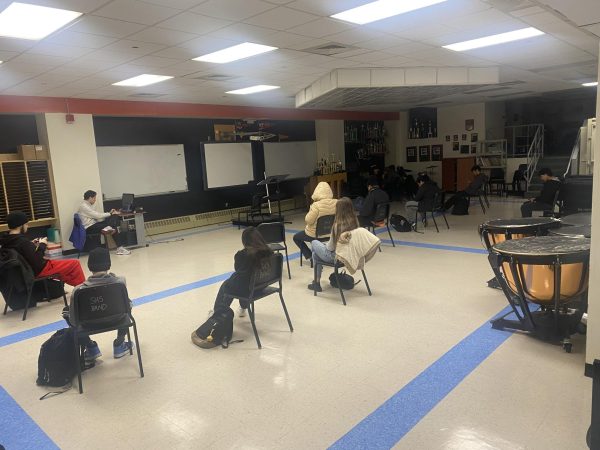Feeling the Heat
High temperatures impact teaching and learning at SHS
September 3, 2015
Every year at Stamford High the temperature and humidity are recurring issues during summer months. Therefore, the end and start of school each year can be brutal for both staff and students. However, the first week of school this year seems to have inspired more complaints from students than in years past. This is partly due to the fact that only floors 7, 8 and 9 (the new building) have air conditioning, along with a very few rooms scattered throughout the old buildings. Due to the new organization of classrooms and departments within the school, the air-conditioned building is only home to the freshman. As a result, other grades and staff are forced to suffer through the high temperatures in the old building.
All week, temperatures have been 80 degrees and higher. Monday, the first day of school, temperatures hit 90 and humidity ranged from 45 to 68 percent. Tuesday followed, with reports of temperatures at 86 degrees and humidity between 45 and 75 percent. Wednesday and Thursday were both in the high 80’s range as well.

A thermometer in a 2nd floor classroom displays a reading approaching 90 degrees.
Freshman Dana Serricchio said, “It is so nice having classes in the new building because of the air; when I come to the old building for my electives, the heat is so bad.” She is not wrong; many studies have demonstrated the negative effects of high temperatures. According to an article in Scientific American, side effects of heat exhaustion include dizziness, nausea, headaches, and fainting.
At Loyola University, a graduate student conducted a study to prove that temperature does affect a person’s ability to memorize information. Students were put into classrooms with temperatures at 64, 72 and 80 degrees, where they all took the same memory test. The results showed that those in the rooms with 64 and 80 degree temperatures had their memories impacted in a negative way. However, those in the 72 degree room had scores that were significantly higher. This shows that high temperatures can result in students not being able to retain information as well as they should.
Not only is the heat a hazard to students, but also to the staff in this workplace. Another study revealed that 26 percent of Chicago Public School teachers and 30 percent of Washington D.C. teachers reported health problems caused by school facility issues. Most of these were from poor indoor air quality. This leads to further concerns regarding the specific health defects that poor indoor air quality can result in. Asthma is one of the most common. A 1999 study in the journal Indoor Air found that students with symptoms of asthma were less likely to be reported within schools that have installed new ventilation systems.
According to the Occupational Safety and Health Administration (OSHA), there are no specific regulations regarding a maximum temperature and humidity. However, they do offer air treatment recommendations for workers. According to these recommendations, temperature should be kept between 68 and 76 degrees, and the humidity range should be between 20 and 60 percent. However, throughout this past week, temperatures and humidity have definitely exceeded these ranges. Plans are in place to distribute fans to some of the hotter classrooms to increase air movement.
Until the district resolves this problem, teachers are forced to figure out their own ways to cope with it. English teacher Robert Lutz, whose classroom is located on the second floor, is one of those teachers. He has had a thermometer in his room for the past few years to record temperatures. Today, September 3, his classroom reached to 90 degrees, even with a fan and the door open for ventilation. Lutz said, “Three or four years ago I told my class that for their final they’d get an extra point for every degree over 90 that the room got to, and it got to 96. My students got six points extra.”












